Charlie Chan's Secret, directed by Gordon Wiles and released in 1936, stands as a brisk, polished entry in 20th Century Fox's long-running Charlie Chan series. Starring Warner Oland as the sagacious Honolulu detective, with Henrietta Crosman and Rosina Lawrence among the supporting cast, the film unfolds as a compact whodunit whose theatrical seances and shadowy ancestral home often evoke the mood associated with later film noir movie aesthetics. This article examines the film's story, construction, and legacy, presenting a close reading appropriate to both cinephiles and readers curious about how an ostensibly straightforward mystery from the mid-1930s anticipates, borrows from, and diverges from what viewers now commonly call the film noir movie tradition.
Outline
- Introduction and context
- Plot synopsis and scene highlights
- Principal characters and performances
- Direction, cinematography, and production design
- Detective technique and the film’s puzzle mechanics
- Psychic deception: seance, ultraviolet effects, and stagecraft
- The film in the context of the Charlie Chan series and 1930s mystery cinema
- Why modern viewers sometimes describe it as having a film noir movie sensibility
- Legacy, public domain status, and sources for further viewing
- Concluding assessment
Introduction and Historical Context
Charlie Chan's Secret is the tenth film in Fox's Charlie Chan cycle to feature Warner Oland. Made and released in the mid-1930s, the picture is compact—running roughly seventy-two minutes—and efficient in its storytelling. Its screenplay credits Robert Ellis, Helen Logan, and Joseph Hoffman, with John Stone and Sol M. Wurtzel producing. The film was shot under the lensing of Rudolph Mate, edited by Nick DeMaggio, and scored by Samuel Kaylin. All of these credits are standard markers of studio-era craftsmanship: experienced hands who knew how to support a genre picture, keep the pace taut, and allow the central detective figure to dominate the proceedings.
From the outset, the picture trades in familiar concerns of 1930s melodrama and mystery: hidden inheritances, long-absent heirs, suspicious advisors, and the family mansion with its secret panels and shadowed corridors. That palette of elements is the material of the mystery movie, and yet the film's reliance on shadowy, claustrophobic interiors and moral ambiguities in the characters’ motives gives it a resonance with the visual and thematic language later associated with the film noir movie.
Plot Synopsis: The Case at Colby House
At its narrative core, Charlie Chan's Secret follows the investigation into the fate of Allen (or Alan) Colby, the missing heir to an estate administered by his aunt, Mrs. Henrietta Colby Lowell. Initially reported lost in a maritime disaster, the possibility that Colby survived—coupled with an apparent intent by unknown parties to prevent his return—initiates a chain of events that culminates in murder and a theatrical unmasking. The film compresses the mystery: Colby's apparent arrival in San Francisco, his murder at Colby House, and a climactic seance that reveals both the murderer’s method and motive.
The film is economical in how it landscapes the mystery. A ship’s salvage yields an identification—a handkerchief marked "AC"—but the identity of a retrieved body remains uncertain; evidence suggests one passenger remains unaccounted for. Rumors and reports arrest the household's attention. Mrs. Lowell, devoted to psychic research in the tradition of her late brother, has long employed Professor Bowen and his medium wife Carlotta. Through the family’s belief in spiritual communication and Bowen’s position as advisor, the film constructs a social ecosystem in which money, devotion, and deception intersect.
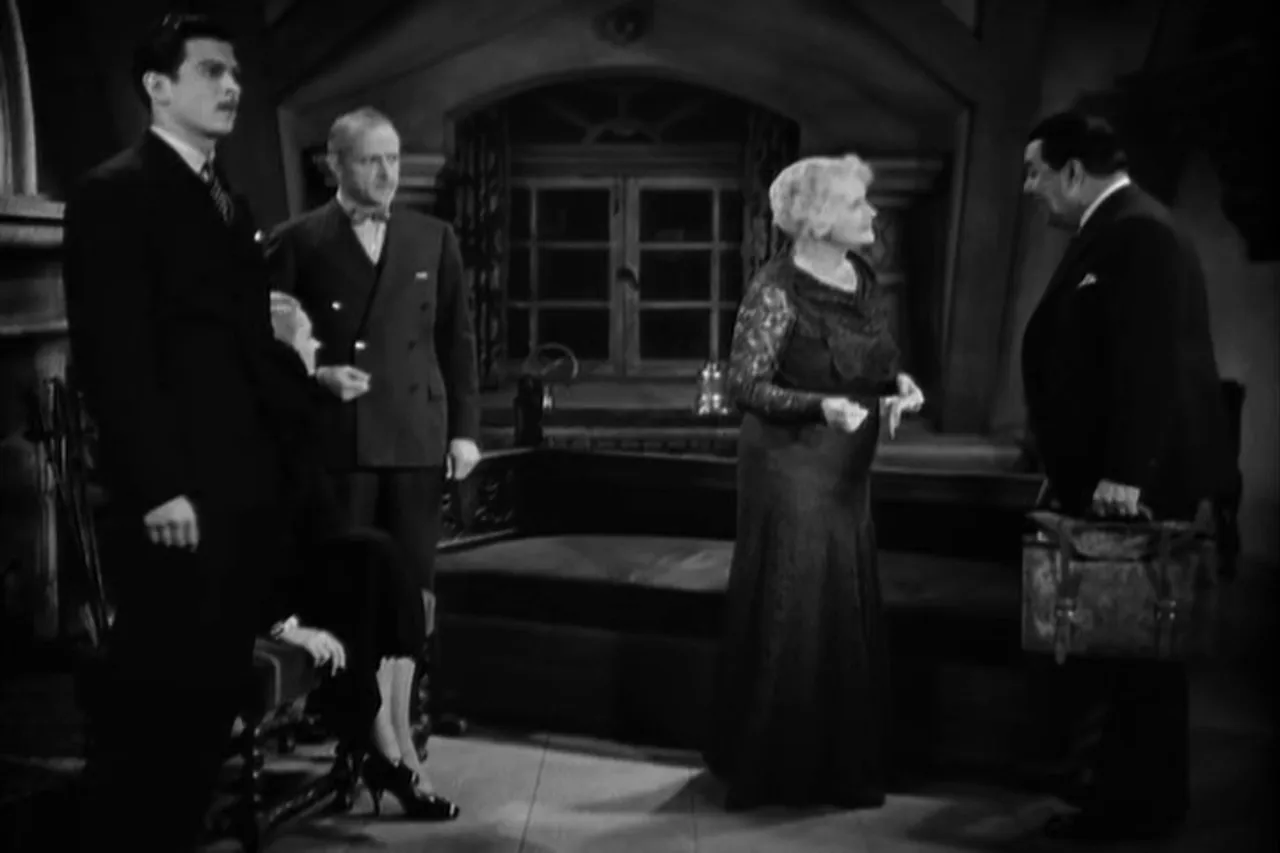
Key Turning Points
- Charlie Chan arrives to investigate the missing heir and learns of the complex family situation.
- Allen Colby appears at Colby House and is promptly murdered; his body is concealed behind a secret panel.
- A seance meant to summon the dead produces the apparition of Colby—an effect engineered through trickery.
- Chan unravels the mechanism behind the seance: ultraviolet light, quinine-treated cloth, a radio trick that provides music, and a concealed transmitter.
- A further murder attempt on Mrs. Lowell (fatal in the film’s emotional economy) escalates stakes and public pressure.
- A final seance forces the culprit into a mistake and provides Chan the theatrical moment to reveal motive and method.
These episodes are staged briskly but with attention to the rhythm of investigation. The film moves from puzzle to clue to reconstruction in rapid sequence; the audience is given both the pleasure of deduction and the dramatic spectacle of a staged exposure.
Principal Characters and Performances
The film deploys a chamber-cast structure: a relatively small group of characters that coexists in a large house full of secrets. The principal figures include:
- Charlie Chan (Warner Oland) – The astute detective whose calm, deductive presence shapes the film. Oland’s Chan is measured, observant, and witty—traits that anchor the film and guide the revelations. Chan’s methodical approach and theatrical reveals are hallmarks of the series.
- Mrs. Henrietta Colby Lowell (Henrietta Crosman) – The family matriarch and administrator of the Colby fortune. Devoutly interested in psychic research, she funds Professor Bowen and trusts in spiritual communication—an emotional axis around which motive and tension turn.
- Alice Lowell (Rosina Lawrence) – One of Mrs. Lowell’s daughters and engaged to Dick Williams; Alice’s anxiety and moral clarity provide an emotional anchor.
- Dick Williams (Charles Quigley) – A reporter, flippant at times but earnest; he provides a light romantic subplot and functions as a foil to Chan’s seriousness.
- Professor Bowen (Arthur Edmund Carewe) and Carlotta (Gloria Roy) – The spiritualist couple whose methods and ethics are central to the plot; Carlotta’s genuine mediumship is distinguished from Bowen’s more dubious manipulations.
- Warren Phelps (Jonathan Hale) – Mrs. Lowell’s attorney, who stands in a conflicted position: as executor he benefits from the heir’s absence and therefore has a stake in the estate’s future.
- Ulrich (Egon Brecher) – The caretaker raw with grievance: a subplot of personal vendetta (his daughter’s failed engagement to Alan and subsequent suicide) supplies motive and red herrings.
Warner Oland’s portrayal of Chan is the film’s stabilizing force. Though the film affords moments for the ensemble—comic relief from Baxter the butler, and suspicion cast upon a range of characters—Chan’s perceptive reasoning and humane comportment guide the audience toward the solution. The cast functions as purposeful types: the credulous, the opportunist, the jaded reporter, and the grieving caretaker. The performances are in keeping with studio expectations—clear, efficient, and committed to moving the story forward.
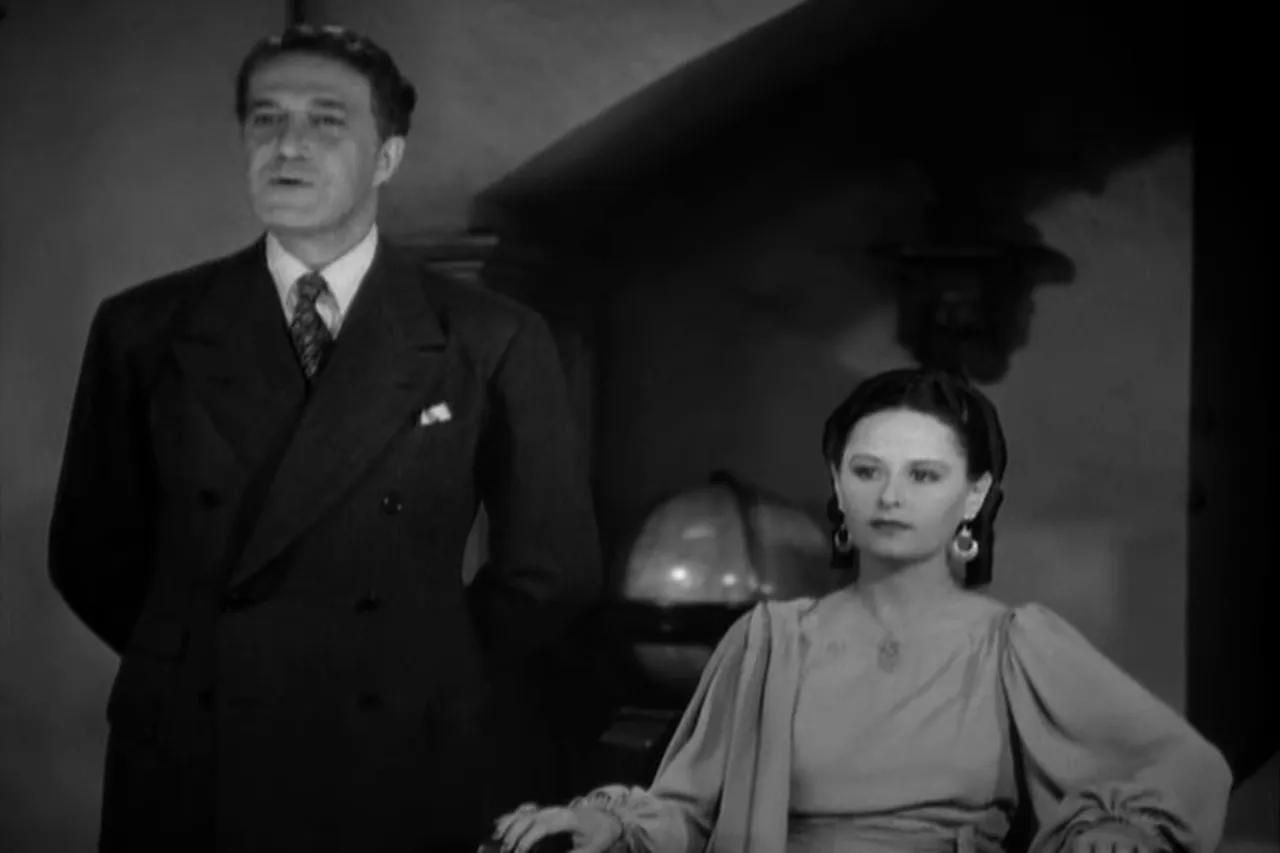
Direction, Cinematography, and Production Design
Director Gordon Wiles keeps the narrative compact and tonally coherent, matching the studio’s economy with a steady hand at the helm. Rudolph Mate’s cinematography is notable for the way it frames interiors—the Colby House is shot as a character in itself, replete with corridors, secret panels, and a sense of enclosed menace. Though the film predates the codified noir style, Mate’s illumination of the house’s nooks and corners, and the use of low-key lighting for the seance and nighttime scenes, often produce visual moments that viewers retrospectively equate with noir motifs.
The sound design—particularly the manipulation of music and radio in the seance scenes—plays a plot role as well as a decorative one. Samuel Kaylin’s music cues emphasize suspense and uncanny revelation, but it is the plot misuse of a radio transmitter that functions as a mechanical device in the story. The set design—Colby House itself—conjures a domestic labyrinth. Secret panels, a study with a window used to fire a rifle, and a room arranged for psychic communions together give the film a theatrical stage quality that Wiles sustains with controlled pacing.
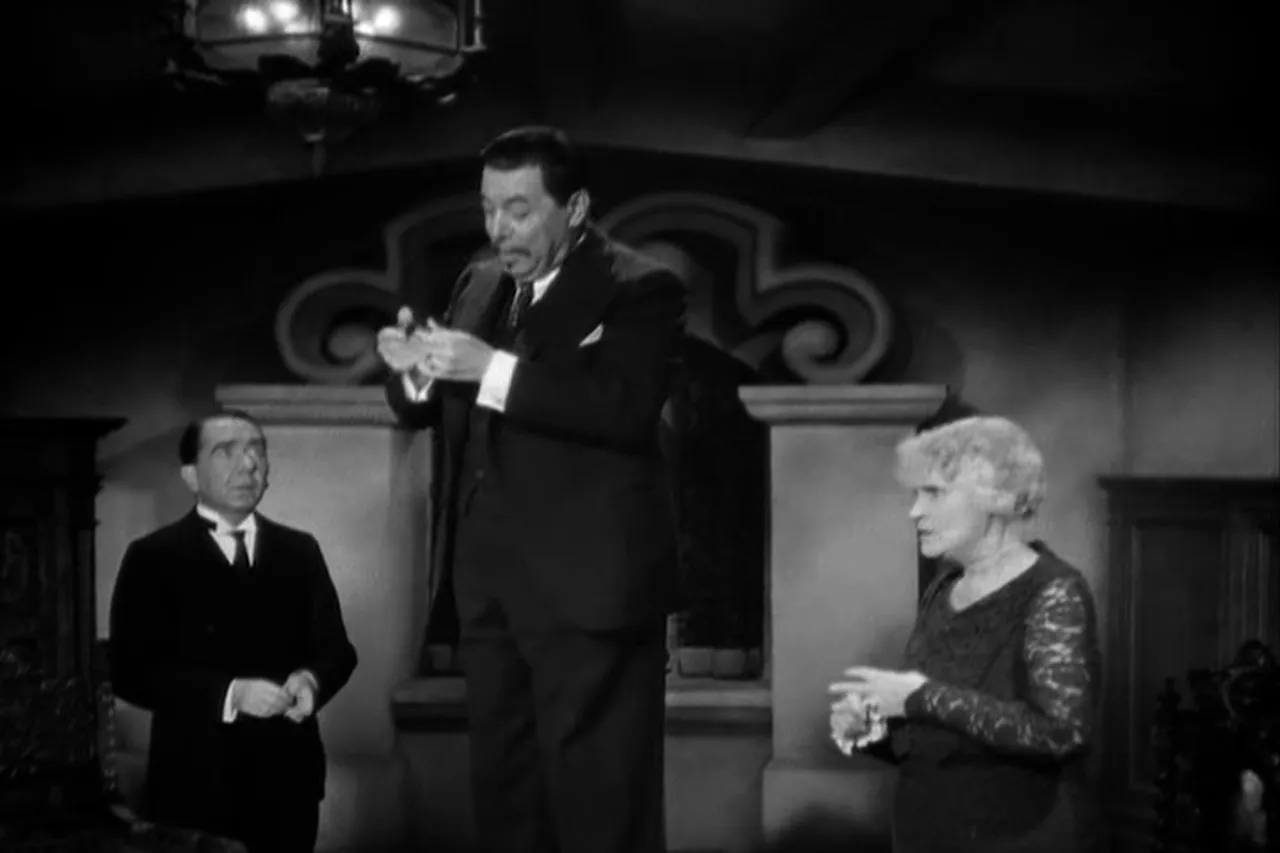
Detective Technique: Chan’s Methodical Unraveling
Charlie Chan works in the classical detective tradition: careful observation, reasoning from physical evidence, testing of alibis, and orchestrating staged reconstructions. The film offers several examples of Chan’s technique that are instructive for detective-movie aficionados.
- Circumstantial aggregation: Chan gathers reports about the ship, lists, and survivors; he knows that one passenger is missing and suspects that the heir may have made it ashore only to be killed.
- Physical deduction: He inspects the murder scene and notes the absence of fingerprints, the use of gloves or handkerchiefs, and the wound’s precise location—insights that frame the medical assessment provided by the pathologist.
- Mechanical curiosity: Chan focuses on devices—the radio speaker, the ultraviolet contrivance, and the rigged bell-triggered rifle. By treating the seance as a theatrical production, he looks for the props that make a show believable.
- Staged demonstration: Perhaps most classically, Chan reconstructs the seance under controlled conditions to reproduce the phenomena and expose the mechanism. This staged exposure is both a narrative and cinematic device: the audience watches the trick redemonstrated and then sees the moral consequence when the trickster slips.
These components constitute the detective’s art in Charlie Chan's Secret. The film’s pleasure derives as much from observing Chan’s calm intelligence as from watching the contrived exposures of human weakness and greed.
Psychic Deception: Seance Mechanics and the UV Lamp
One of the film’s smartest and most theatrical elements is its treatment of the seance as technology in service of deceit. At a foundational level, the seance is staged with props: radio music to provide an eerie soundtrack, ultraviolet light to make quinine-treated cloth glow, mirrors and filters to refract light, and—most cleverly—a radio transmitter and receiver hidden within the house’s fabric. These devices enable an apparent communication with the spirit world, a trick shown in the film with both forensic calm and melodramatic effect.
Chan’s discovery sequence is instructive: he recognizes that the handkerchiefs used in the seance are chemically treated with quinine sulfate. When exposed to ultraviolet rays, quinine fluoresces, producing an eerie glow across facial features. In cinematic practice, the effect sells a spirit's presence; in the film’s logic, it is proof of tampering. The film stages the demonstration: low lights, the dim glow, and then the reveal of mechanical contrivance. The radio’s role is equally pragmatic—a repeating music loop played from a hidden transmitter makes the seance appear to be an otherworldly chorus when in fact it is entirely terrestrial.
Thematically, the plot’s reliance on spiritual deception speaks to anxieties about modernity and charlatanry. The spiritualist movement, long popular in the late nineteenth and early twentieth centuries, is here dramatized as a site where genuine belief and opportunistic fraud coexist. The film preserves this tension by offering Carlotta as an apparently sincere medium while implying ambiguously at first that Bowen may be manipulating his wife’s gifts for personal gain—an ambiguity Chan explores and ultimately pierces.
How Motive and Mechanism Intertwine
Charlie Chan's Secret is explicit in its linking of motive to mechanical means. The estate is the pivot upon which motives turn: an absent heir means the aunt controls the fortune and dispenses funds—among them, the funds used to support and endow psychic research. Beneficiaries such as Professor Bowen and his wife, and administrators like Warren Phelps, therefore have financial reasons to oppose a returned heir. Ulrich the caretaker brings a more personal motive—revenge for a daughter’s sorrow. The script distributes suspicion liberally across the household, which is its strength: each character can plausibly be the culprit and has both opportunity and motive.
The film makes the solution depend not merely on decoding character motives, but on exposing a specific technological ruse. Bowen’s knowledge (and if one reads the film harshly, potential involvement) in the quinine-and-ultraviolet trick is critical. Chan’s final move—arranging a seance that causes the murderer to commit an error—unites detection with spectacle. The murderer’s mistake is theatrical: a thrown knife meant to smash a reflected image but instead pointing to guilty hands. That theatricality is a hallmark of classical mystery plotting and allows the film to deliver a neat dénouement.
Structure and Pacing: Studio Economy at Work
Running at approximately 72 minutes, Charlie Chan's Secret demonstrates studio economy. Scenes are compact, exposition is efficient, and the film keeps forward momentum. There is little in the way of digressive subplots that do not serve the central mystery; even the romantic subplot involving Alice and her fiancé Dick Williams remains a functional component of the ensemble, offering a human center and intermittent levity.
This economy also means the film must rely on recognizable types and ready-made dramatic conventions: the long-lost heir melodrama, the skeptical detective, the gullible patron of the occult, the ambitious advisor, and the resentful caretaker. The film's strength is not in surprising its audience with novelty but in the skillful deployment of those conventions to produce crisp suspense and a satisfactory resolution.
Why Viewers Sometimes Invoke the Term "Film Noir Movie"
It is worth addressing a common critical impulse: viewers occasionally describe Charlie Chan's Secret as having the sensibility of a film noir movie. Strictly speaking, the film belongs to an earlier tradition—the classical detective movie and the studio mystery—but certain visual and thematic overlaps account for the association.
- Visual shadows and claustrophobic interiors: Rudolph Mate’s framing of secret rooms and dimly lit corridors produces a sense of entrapment typical of noir mise-en-scène.
- Morally ambiguous motives: The film dwells on greed, opportunistic fraud, and emotional resentment—common themes in noir narrative.
- Crime as performance: The use of theatrical trickery and staged deception gestures toward noir’s interest in artifice and the performance of identity.
- Detective as moral center: Chan’s steady, ethical reasoning recalls the hard-boiled detectives of noir, although Chan’s temperament and method differ significantly in temperament and cultural detail.
Nevertheless, Charlie Chan's Secret is not a film noir movie in the strict sense: it predates the noir cycle’s defining historical context (postwar disillusionment, stylistic extremity, and specific moral cynicism). However, the film’s shadowy interiors, psychological friction, and focus on betrayal and greed create an anticipatory atmosphere. For critics comparing lineage rather than taxonomy, it is a reasonable, if loose, connection to make: the film embodies certain atmospheric elements that later coalesce into the film noir movie idiom.
The Film within the Charlie Chan Canon
As the tenth film starring Warner Oland, Charlie Chan's Secret occupies a comfortable place within a long-running popular franchise. The series’ formula—Chan’s arrival, a compact ensemble of suspects, a puzzle, and a revealing dénouement—repeats across entries, but each film varies its set pieces and central gimmicks. In this case, the seance apparatus and the house’s secret panel are the distinctive set pieces. The film sustains series conventions while introducing a mechanical trick (the quinine-ultraviolet effect) that is memorable precisely because it blends scientific curiosity with theatrical deception.
The Charlie Chan films were a product of their time: they offered audiences a blend of mystery, exoticism as framed by Hollywood conventions, and moral retribution. The series’ popularity hinged on the steady personality of the detective and the comforting resolution of the crime. Charlie Chan's Secret adheres to these expectations and provides the quick, satisfying entertainment the audience expected from a serialized detective vehicle.
Technical Notes and Forensic Drama
For viewers interested in the forensic aspect of classic cinema, Charlie Chan's Secret includes several interesting touches. The pathologist’s examination, the detective’s attention to fingerprints, and the chemical analysis of the handkerchief all reflect a cinematic interest in nascent forensic methods. The plot leverages technical detail—quinine’s fluorescence under ultraviolet light, radio transmitters for background music, and a bell-triggered rifle—to add plausibility to the fraud and intellectual satisfaction to the detective’s unraveling.
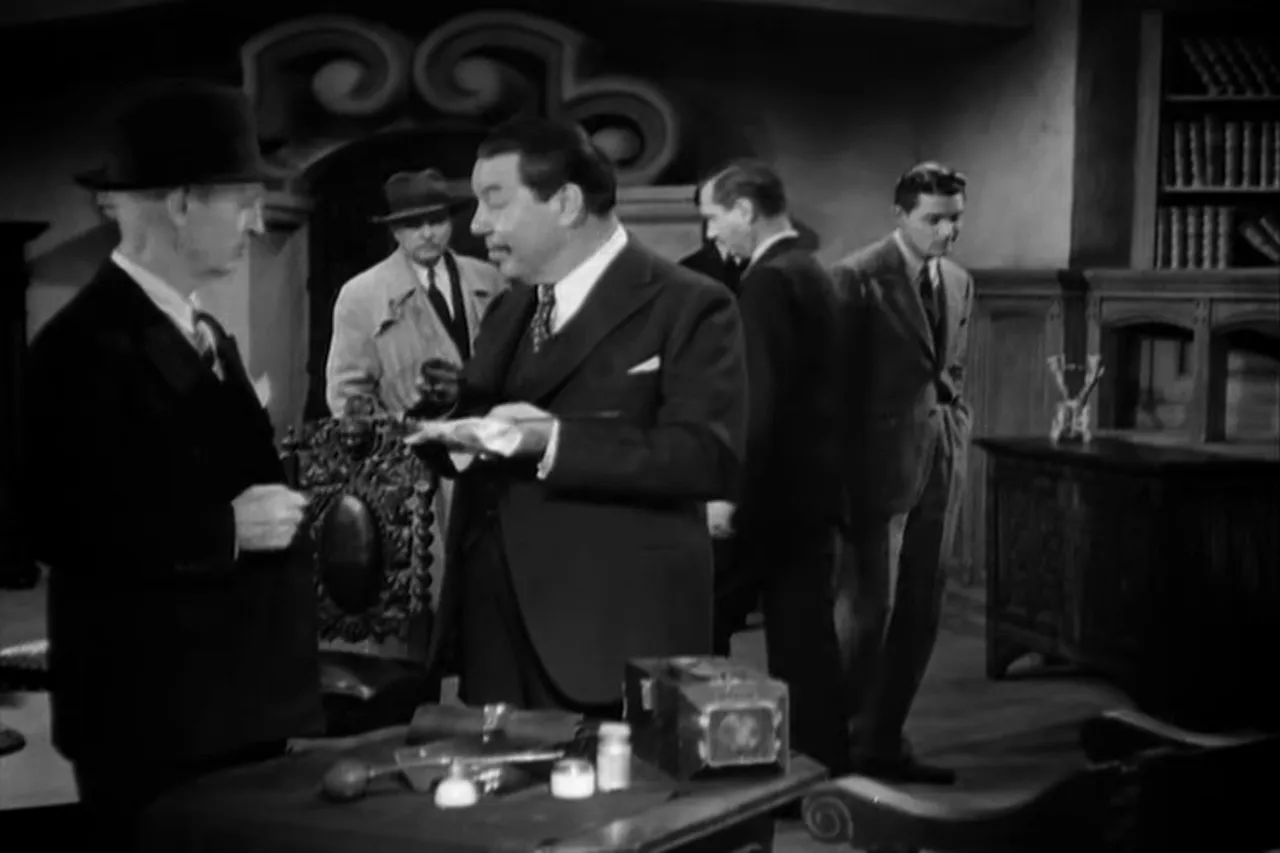
These elements demonstrate the film’s attention to procedural realism within the constraints of melodrama. The technicality is not merely ornament; it is plot-critical. The viewer learns along with Chan, and the film rewards close observation. This procedural aspect is one reason the film continues to interest classic-mystery enthusiasts: it offers a miniature lesson in how technological props can be enlisted into narrative deception.
Thematic Layering: Faith, Fraud, and Familial Duty
While the film’s surface is a detective puzzle, its deeper currents probe questions about belief and the exploitation of faith. Mrs. Lowell’s devotion to psychic research is sincere; she is not the film’s villain. Yet her investment in psychic culture creates vulnerabilities that unscrupulous individuals might exploit. The film treats spiritualism ambivalently: it presents both genuine mediumistic experience in Carlotta and fraudulent stagecraft in Bowen. That ambivalence is a rich moral interest of the film—are the consolations of faith worth the financial and emotional cost when charlatans prosper?
Family duty is another theme. The missing heir’s claim threatens to displace the aunt and her household from the position of stewardship. That threat produces anxieties—moral, financial, and psychological—which the film dramatizes via suspicion and ultimately by criminal action. The interplay of familial loyalty and financial interest is the engine that drives the motives and makes the mystery narratively compelling.
Legacy, Availability, and Public Domain Status
Charlie Chan's Secret is now in the public domain, a status that has allowed the film to be widely available via archival platforms and classic-movie repositories. It is a useful film for scholars and fans who wish to trace the development of detective cinema and to observe how pre-war mysteries staged both the scientific and the supernatural. The film’s accessibility makes it a reliable reference for study, and its compact running time invites repeated viewings.
As part of the series, it also represents the stable mechanics of studio-era detective franchises: reliable character work, economical storytelling, and a visual command that, while not spectacular, consistently supports the narrative’s needs. For viewers curious about the Charlie Chan cycle, the film provides an archetypal sample of the series’ pleasures.
Notable Scenes and Screenshots to Study
Several sequences reward attention for their staging and thematic density:
- The discovery of the "AC" handkerchief early in the story, which both strengthens the possibility that the heir survived and starts the chain of suspicion ().
- Chan’s arrival at Colby House and the domestic interplay between the family, illustrating character dynamics (see the moment Chan is introduced to the family circle: ).
- The first seance itself, staged with dim lights and murmured incantations; the scene’s theatricality is the film’s centerpiece ().
- Chan’s forensic inspection: the ultraviolet lamp and the quinine-treated cloth—cinematic pedagogy in the service of plot (
 ).
). - Police discovery and the aftermath of a second violent act, which accelerates the film’s urgency ().
- The final seance and reveal, where theatrical misdirection meets deductive closure (
 ).
).
Critical Assessment: Strengths and Limitations
Charlie Chan's Secret is strong where a compact detective movie must be: plotting economy, clear character types, and a memorable set-piece that constructs the film’s central gimmick. The ultraviolet-quinine trick is a clever and satisfying device; the film makes good use of the visual possibilities of the seance to stage both spectacle and clue. Warner Oland’s steady performance is the film’s heart; his Chan provides moral gravity and gentle humor that guide the viewer through red herrings and reveal.
Limitations are also evident. The film adheres to stock types and sometimes simplifies motive into neat categories; modern viewers may find the family’s social world underdeveloped. The film’s moral axis is predictable: the greedy and manipulative are exposed while the sincere suffer. Additionally, the film’s depiction of psychic practice—while dramatically useful—can feel somewhat schematic in its juxtaposition of genuine mediumship and fraudulent performance. Yet these limitations are also part of the film’s formal identity: it is a studio genre picture, designed to satisfy audience expectations more than to reinvent them.
Finally, the film’s cultural markers must be contextualized: Warner Oland, a Swedish-born actor who performed the role of Charlie Chan, is historically emblematic of Hollywood practices now critiqued for casting and representation. Any modern assessment of the film must reckon with those aspects while still acknowledging the craftsmanship in storytelling and production.
Why the Film Still Matters to Classic Cinema Aficionados
Charlie Chan's Secret matters for several reasons. First, it is a finely constructed example of the studio-era detective picture—compact, efficient, and clever. Second, its central gimmick—the blending of stagecraft, chemistry, and radio technology—offers a valuable case study in how films represent technological deception and the intersection of science and spectacle. Third, the film’s atmosphere—the house as a repository of secrets, the dimly lit seance room, the carefully staged unmasking—links it aesthetically to developments in crime cinema that prefigure noir tensions.
These qualities make the film rewarding to historians and fans alike. It encapsulates a moment in which mystery cinema balanced theatricality with forensic curiosity, and it provides a pleasurable blueprint of how studio-era genre films engineered narrative satisfaction within a strict runtime.
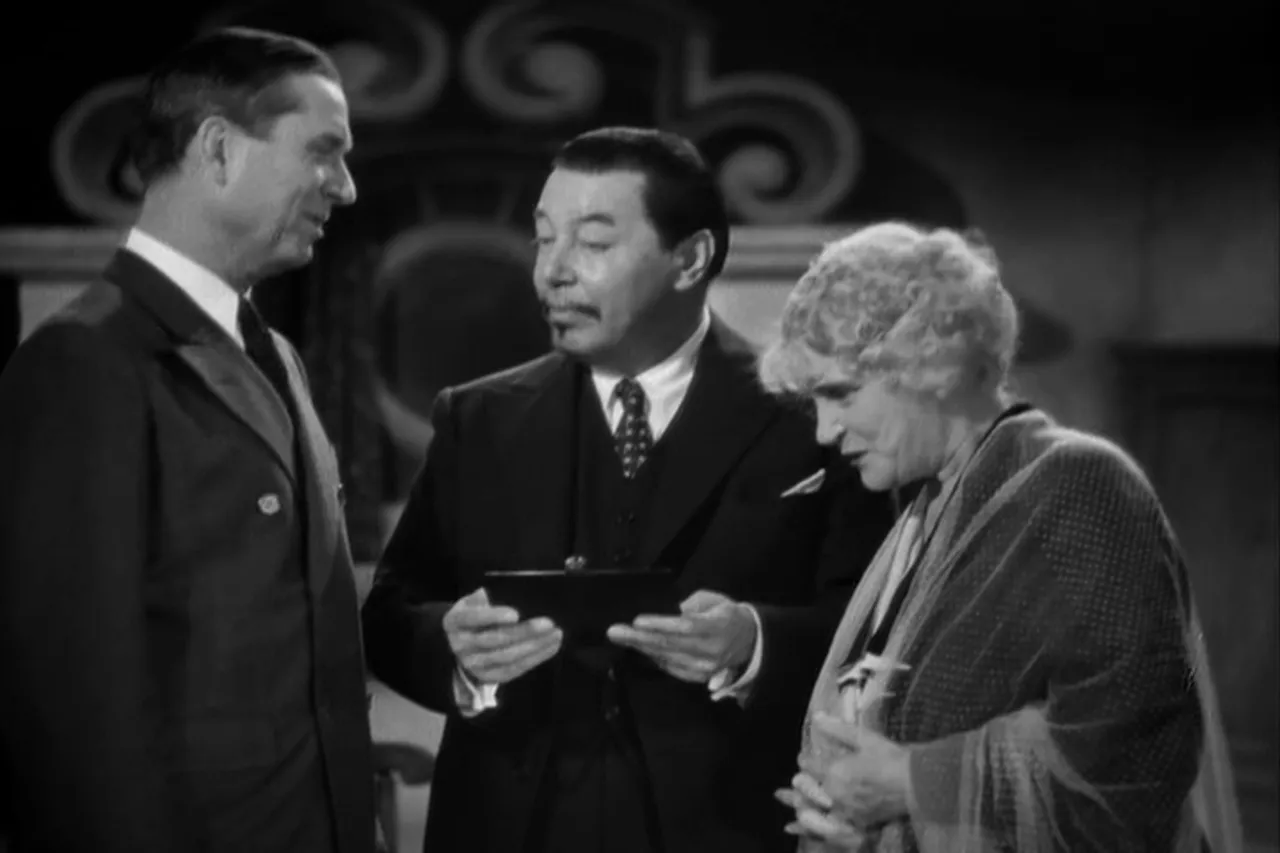
Concluding Thoughts
Charlie Chan's Secret is a neat, well-constructed detective film whose theatrical seances, secret panels, and mechanical ruses supply both spectacle and puzzle. While not strictly a film noir movie by historical definition, it contains visual and thematic echoes that intrigue modern viewers tracing the genealogy of noirish mood in American cinema. The film rewards attention for its economy of storytelling, Warner Oland’s steady Chan, and its clever exposition of how trickery can masquerade as the supernatural.
For those who study canonical genre development, Charlie Chan's Secret is a useful artifact: a studio mystery that favors observation and demonstration, that examines faith and fraud, and that demonstrates how mid-1930s cinema could combine technical curiosity with detectivedriven drama. It remains available thanks to its public domain status, and it is well worth a viewing for anyone interested in the lineage of crime films, the mechanics of cinematic deception, and the narrative pleasures of a tightly staged mystery.
Selected Quotations from the Film
"Alan Colby murdered. Notify police immediately. Touch nothing until police arrive."
"Quinine sulfate, when exposed to rays of ultraviolet light, produce mysterious light which accompany apparition."
"Finding Webb of Spider does not prove which spider spin Webb."
These lines illustrate the film's tonal blend: the frankness of police procedural speech, the scientific specificity that informs the plot’s puzzle, and the wry aphoristic voice that Charlie Chan contributes to the story.
Where to Watch and Read More
Because Charlie Chan's Secret is in the public domain, it appears on archival streaming platforms and classic film repositories. Interested viewers may consult the film's production credits—director Gordon Wiles, cinematographer Rudolph Mate, editor Nick DeMaggio, composer Samuel Kaylin—and the cast list led by Warner Oland. For canonical context, the film is the tenth Fox entry with Oland as Chan and reflects the series’ mix of civilized deduction, family drama, and studio-era mystery plotting.
Classic-movie enthusiasts and critics alike will find this film a compact demonstration of how studio craftsmen constructed mood and mechanism within a brief runtime. It is not only a curiosity of the Charlie Chan corpus: it is a demonstration of how the art of plotting and the clarity of disclosure can hold an audience’s interest through sheer theatrical ingenuity.
Ultimately, Charlie Chan's Secret remains a modest but satisfying classic: a mystery that demonstrates the pleasures of careful observation, the moral economy of detection, and the sheer cinematic joy of a well-executed reveal. For anyone interested in the origins of cinematic atmosphere that later came to be folded into the film noir movie sensibility, a close viewing of this film rewards study and appreciation.

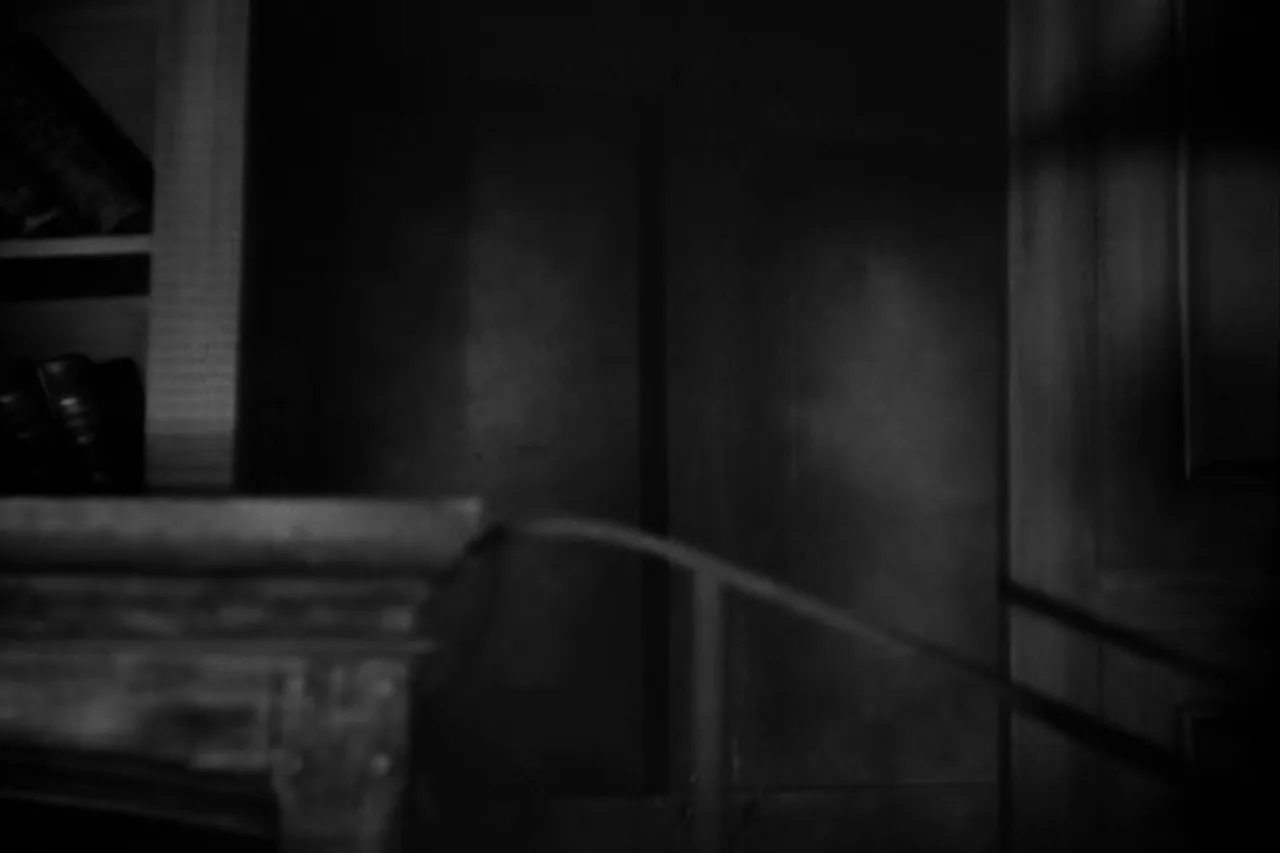 ).
).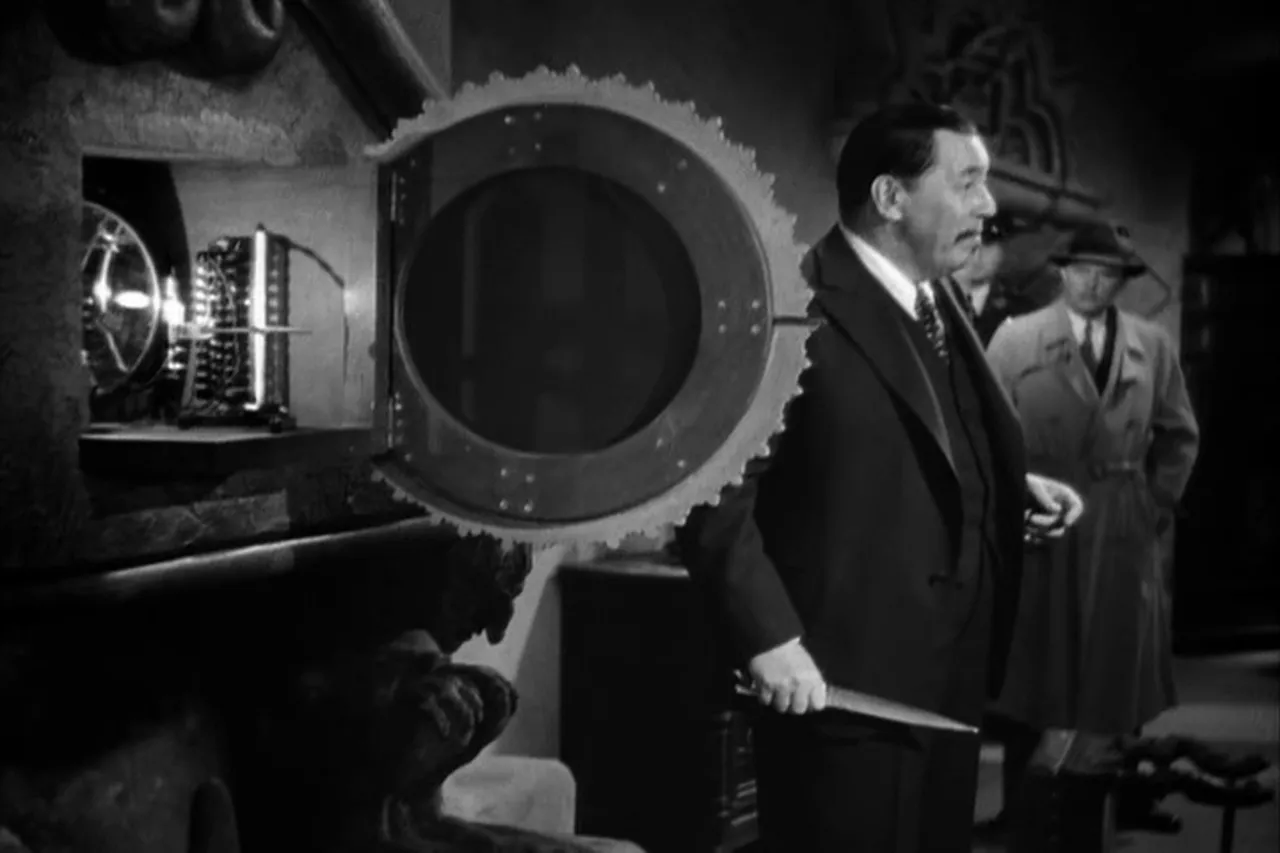 ).
).